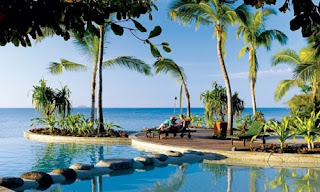Tourism Products
Despite products’ being the central feature of the industry, much confusion washes over the concept. Products like attractions are often confused with the activity and with services, but a product is more than these. A useful definition comes from the Honduran Institute of Tourism, slightly modified by the Public Use Planning effort. Though each industry defines product components according to its own realities, tourism can be thought of as six components aligned in a logical sequence.
Tourism Products
Attraction. All tourism products begin with an attraction, without which no further discussion is needed.
Access. An attraction must have access or else no further discussion is needed. Do note, however, that most often access refers to visitor capacity to arrive. Sometimes access means the opposite. Sometimes an attraction is attractive because it is difficult to get to, such as wilderness areas and for adventure activities. Either way, access is essential to the exploitation of the attraction.
Activity. Every visitor experiences an attraction, but how they experience depends on the activity they select (see “Experience” below). A person can experience Mount Everest vicariously through the Internet or from the porch of a cushy mountain lodge. They could also experience it by scaling the mountain to its death-defying icy peak. Thus it is erroneous to say that Mount Everest offers a particular kind of experience; it may be short-hand for mountaineering, but experience depends on the activity.
Services. To realize an activity requires services. Services are all those functions that a visitor might or might not be able to do for him or herself but in all cases chooses someone else to do it for them. Services include actually allowing the activity to take place (such as access granted by a national park), the security of park guards and wilderness responders, the food, the housing, the transportation, the communication, the provision of souvenirs, etc. If an activity requires no services (such as using the backyard of one’s own home), then we are not talking about a tourism product.
Qualified personnel. Service provision, in turn, requires that someone qualified to provide that service, whether a guide, chef, driver, transportation company, national park staff, police, or street juggler. Even if that someone is an automated robot, it still requires someone (and someone also to service the robot, of course).
Promotion. Despite the best of tourism product designs, if no one knows the product exists, then all is for naught. A tourism product must also include promotions, even if that is “only” word-ofmouth.

Comments
Post a Comment